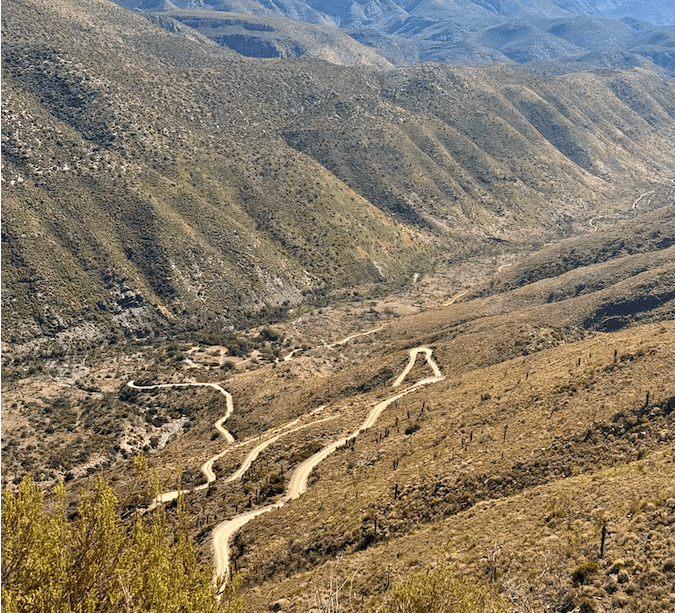Christmas Day 2024 was one for the books as we set off on a family adventure through the Swartberg Pass, an iconic piece of South African history. With my parents leading the way in their trusty Toyota Fortuner 3.0 D4-D and Clark and me in our Land Rover Discovery 5, we braved the twists, turns, and legends of one of the most breathtaking mountain passes in the world.
The Start of the Journey
Our day began in Mossel Bay, where we attended a Christmas church service and exchanged gifts before loading up the vehicles. With snacks packed and spirits high, we hit the road, heading toward Oudtshoorn—the gateway to the Swartberg Pass. The route from Mossel Bay to Oudtshoorn is picturesque, with rolling hills, golden fields, and the majestic Outeniqua Mountains in the distance. As the temperature climbed to 34°C outside, our cabin stayed cool and comfortable at 20°C, thanks to the Discovery’s air-conditioning.
Entering the Swartberg Mountains
Leaving Oudtshoorn, we began the climb toward the Swartberg Pass. This legendary mountain range, part of the Cape Fold Belt, is over 300 million years old. The pass itself, a masterpiece of engineering, was constructed between 1881 and 1888 by Thomas Bain and his team using convict labour and simple hand tools. Bain’s genius is evident in the dry-stone retaining walls, which remain sturdy and functional more than a century later.
The gravel road twisted and turned, revealing panoramic views of the Little Karoo and beyond. At every bend, the towering cliffs and intricate rock formations—layers of ancient seabeds folded into dramatic shapes—reminded us of the sheer scale of nature’s power.

The Descent Into Die Hel
After a short break to deflate our tyres for better traction on the gravel, we turned off toward Gamkaskloof, famously known as “Die Hel.” The road to Die Hel is about 48 kilometres of steep switchbacks, narrow ledges, and heart-stopping drops. This is not a drive for the faint-hearted, but the rewards are immense.
As the Fortuner and Discovery carefully navigated the sharp turns, we paused at viewpoints to let upcoming cars pass on the narrow road. Each stop offered a chance to soak in the sheer beauty of the valley below, with its lush greenery contrasting against the arid mountains. The descent felt like stepping back in time—into a valley that remained isolated from the rest of the world for over a century.
Die Hel was first settled in the 1830s by farmers seeking a remote haven. The valley’s residents lived self-sufficiently, farming, crafting, and bartering with nearby towns. The road we drove wasn’t built until the 1960s, and before that, the only way in or out was by donkey trails.
Lunch at Ouma Sannie’s
Once in the valley, we stopped at Ouma Sannie’s for a well-earned lunch. This charming eatery offers not just hearty food but also a window into the valley’s history. Over plates of traditional South African fare, we shared laughs and reflected on the drive down. As I joked, “It’s not as bad as the minister tells you it is,” we all agreed that the adventure was worth every nerve-wracking turn.
The Climb Back Up
With full stomachs and renewed energy, we began the climb back out of Die Hel. The switchbacks seemed even steeper on the way up, but the Discovery and Fortuner handled the challenge like champs. We marvelled at how quickly we’d tackled the descent earlier as we pulled over to let oncoming vehicles pass.
The late afternoon light painted the mountains in hues of gold and amber, creating a magical backdrop for our ascent. Clark, ever the adventurer, peered out the window in awe at the sheer drops and distant peaks.
To Hell and Back
By the time we reached the summit of the Swartberg Pass, the sun was dipping below the horizon, casting long shadows over the valley. We took a final moment to admire the view before heading back toward Oudtshoorn and eventually Mossel Bay. The journey had taken us to the edge of South Africa’s wild beauty and back, leaving us with memories to last a lifetime.

The Legacy of Swartberg Pass
Driving the Swartberg Pass is more than just a road trip; it’s a journey through history, geology, and breathtaking landscapes. From its construction by Thomas Bain to its role in connecting isolated communities, the pass is a testament to human ingenuity and resilience.
For our family, this Christmas adventure was a reminder of the beauty and challenge of exploring the unknown. To hell and back? Absolutely. And we’d do it again in a heartbeat.
Carlo is an off-road adventure enthusiast and hobby copywriter who is passionate about exploring forgotten routes. When he’s not blazing trails, he works as a Digital Software Solutions Architect, bringing innovation and creativity to his professional pursuits.


Hi